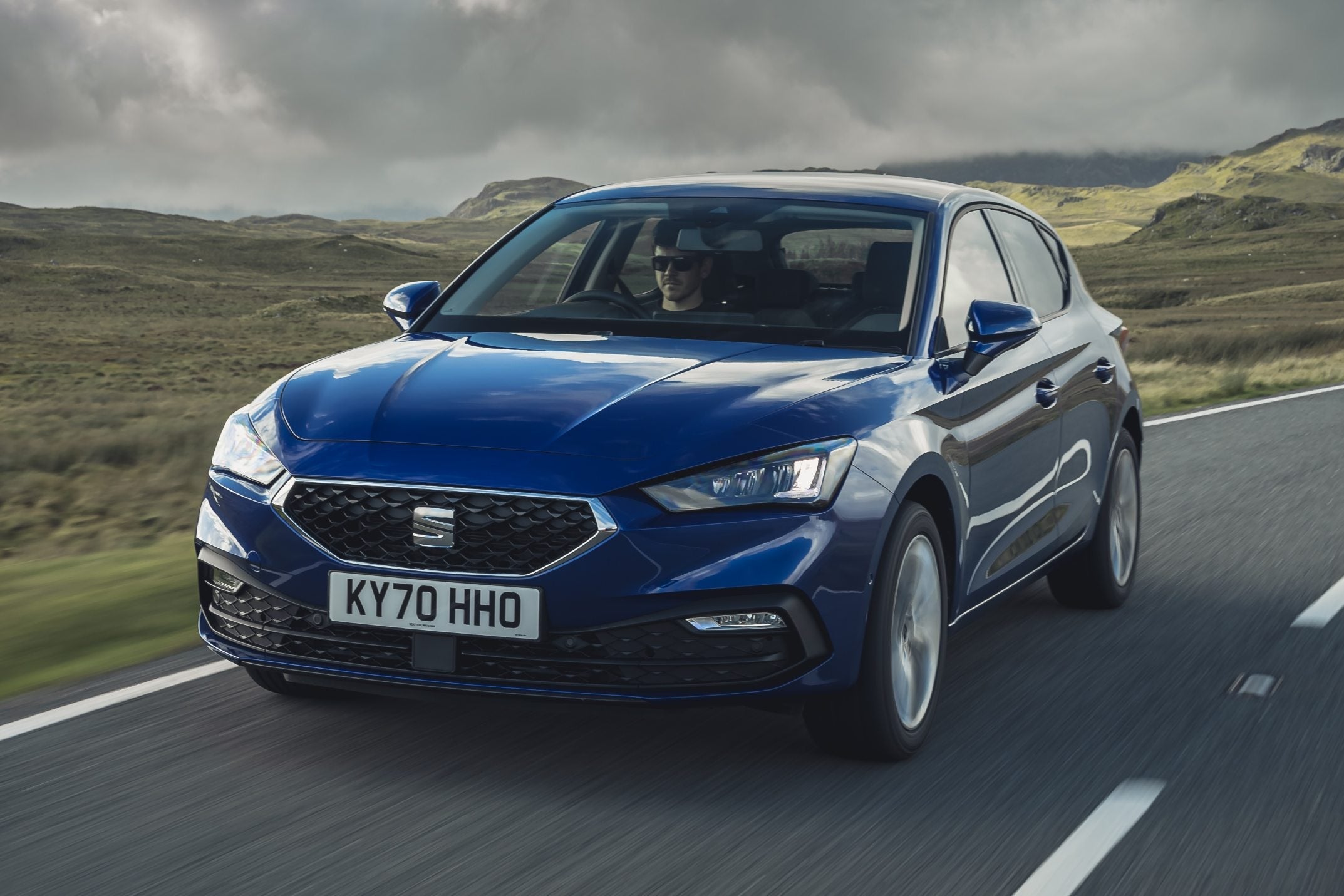SEAT Leon Review 2025: Price, specs & boot space
Written by Andrew Brady
Quick overview
Pros
- Wide range of refined petrol, diesel and plug-in hybrid engines
- Interior is stylish and loaded with standard equipment
- Easy and enjoyable to drive
Cons
- Ride comfort is on the firm side
- Not as practical as a Skoda Octavia
- Annoying touch-sensitive climate control buttons
Overall verdict on the SEAT Leon
"Stylish, fun to drive and practical, the SEAT Leon is everything a modern family hatchback should be. The Leon offers a sportier flavour than the Volkswagen Golf while its generous spec makes it better value, too."
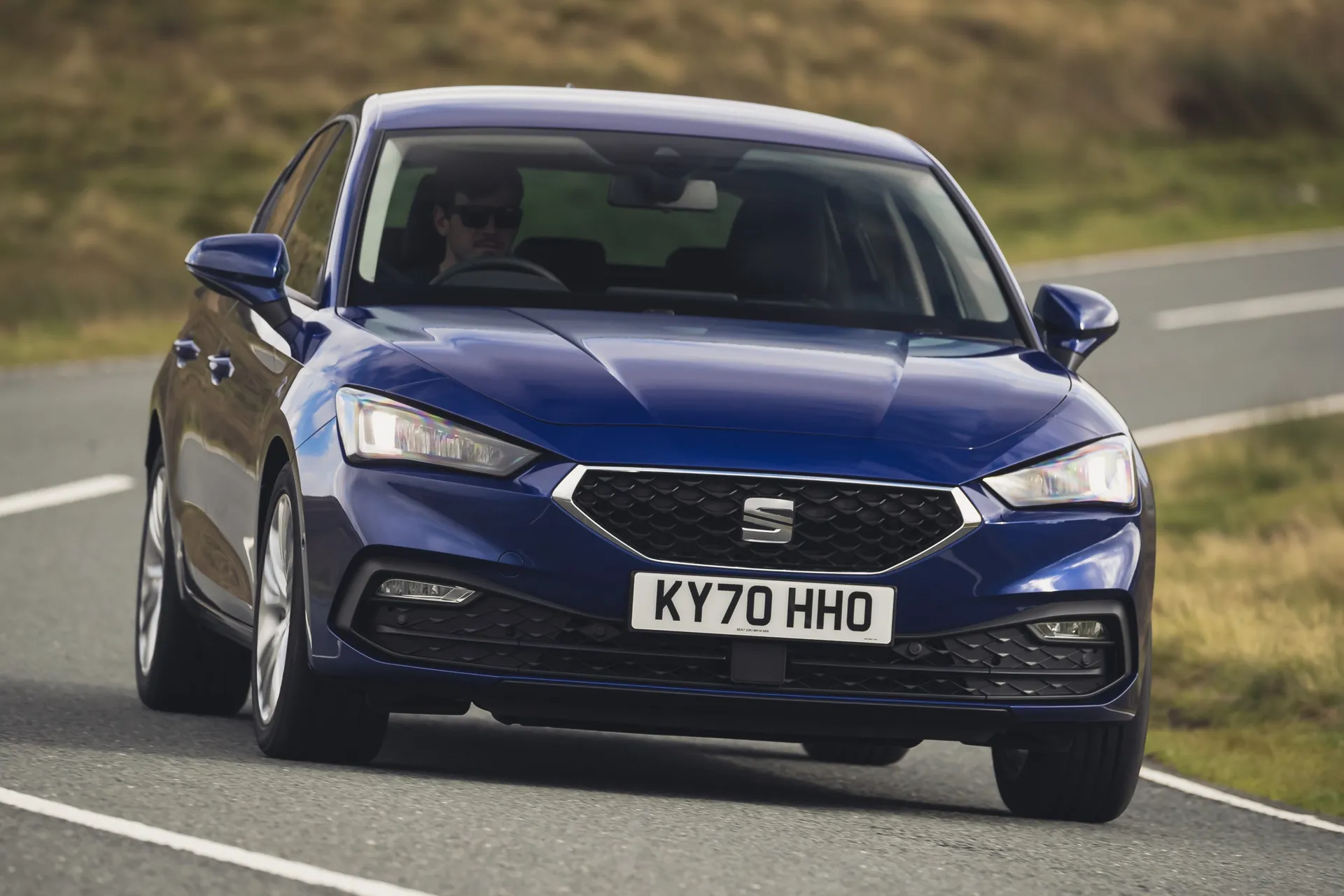
It's no exaggeration to say the heyday of the compact family hatch has passed, with many buyers clamouring for a small SUV instead. Yet, despite falling out of fashion, cars like the humble SEAT Leon-sized family hatch are better than ever, and remain a really good choice if you don't need a huge amount of practicality and just want something that'll get you from A to B in comfort. Cars like the Toyota Corolla and Mazda 3 really deserve to sell in bigger numbers than they do – can the same be said for the Leon? Read our full SEAT Leon review to find out.
The Leon shares its mechanicals with the latest Volkswagen Golf, meaning you can choose from a number of petrol, diesel and hybrid engines. The majority of buyers will go for the 1.5-litre petrol, which is efficient yet eager enough to cope with out-of-town driving.
A number of engines (those paired with automatic gearboxes and sporting 'eTSI' badges) come with mild-hybrid technology. That doesn't mean a great deal in real-world performance, apart from slightly improved fuel economy.
If you really want a true hybrid, you'll need the Leon e-HYBRID. This is actually a plug-in hybrid, meaning you'll have to charge it regularly to make the most of it (just like an electric car). Unlike an EV though, it has the back up of a 1.4-litre turbo petrol engine, for those times when you wish to travel further than its 40-mile electric range.
All SEAT Leon models are good to drive - slightly tauter than a Golf and competing with the likes of the Mazda 3 and Ford Focus in terms of driving dynamics. You sit low, which adds to the sporty feel, while the suspension is noticeably on the firm side. It's not uncomfortable, though, providing you avoid FR-spec models with their sports suspension. These are a bit eager to pass bumps into the cabin, especially if you buy one with 18-inch alloy wheels.
Inside, even low-spec Leon models feel surprisingly posh. There's a lot of chrome, while the toggle gear selector on DSG automatic models is a neat touch. Most models come with ambient lighting, which looks pretty swish, but we're not so keen on the wraparound lighting which is a little distracting when driving in the dark (although you can reduce the brightness). Fortunately, this is only available on certain trim levels.
There's more space inside than before, with loads of room for tall drivers to get comfortable (helped by plenty of adjustment in the driver's seat and steering wheel). A longer wheelbase compared to the old Leon means there's a decent amount of room in the back, but the boot isn't anything to write home about. If writing home about boots is your thing, you'd be better off looking at the Skoda Octavia or even the ST estate version of the Leon.
The best thing about the Leon is the value for money it offers. It doesn't feel like a budget offering but there are some tempting deals for as-new examples. For example, an ex-demonstrator model can be picked up for the price of a Volkswagen Polo, and SEAT's limited options policy means all trim levels are well-equipped.
Looking for a used car for sale? We've got 100s of SEAT Approved Used Cars for Sale for you to choose from, including a wide range of SEAT Leon cars for sale. If you're looking for the estate version, you need our SEAT Leon Estate review.
Is the SEAT Leon right for you?
If you want a stylish hatchback that's a bit of a left-field choice, the SEAT Leon could be a really solid purchase. It's stylish, fairly spacious, cheap to run and great to drive. It's also relatively affordable.
What other cars are similar to the SEAT Leon?
There are lots of very good family hatchbacks on the market that are worthy of your attention. For a start, the Volkswagen Golf and Skoda Octavia share engines and other mechanical bits with the SEAT Leon, so should definitely be on your shortlist. Then there's the uber-popular Ford Focus which, like the Leon, is brilliant to drive.
We'd also chuck the slightly left-field Mazda 3 into the mix for its superb interior. Then there's the excellent Toyota Corolla, which is sold as a conventional hybrid model. You could also look at premium alternatives like the BMW 1 Series, Mercedes A-Class and Audi A3 – or crossover SUVs like the SEAT Ateca, Peugeot 3008 and Kia Sportage.
Comfort and design: SEAT Leon interior
"The SEAT Leon's relatively low driving position adds to its sporty vibe. It's a refreshing change when everything else aspires to be an SUV."
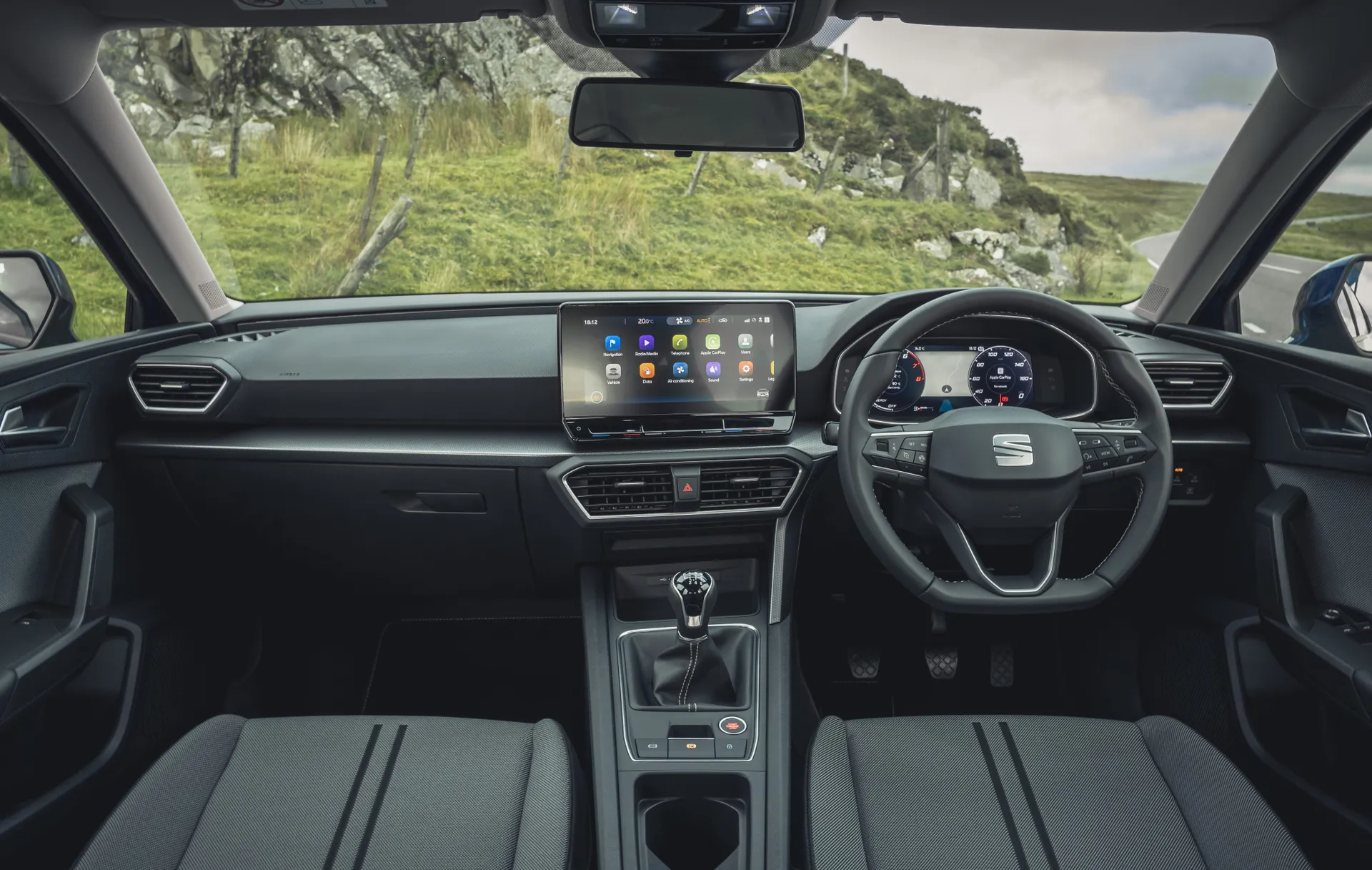
It's easy to get comfortable in the Leon. The steering wheel goes up and down as well as in and out, while the seats provide plenty of adjustment - there's electric adjustment and powered lumbar support for the driver's seat in the FR Sport. The previous Xcellence also offered this touch of luxury. While you're not going to be looking down on other motorists, few will find issue with the seating position in the Leon.
The interior looks stylish and upmarket, with an abundance of chrome finishes and stylish angular shapes (the hexagonal air vents for example).
On cars fitted with the DSG automatic gearbox, you select drive using a little toggle on the centre console. Not only does this look fancier than an old-fashioned gear selector, it also saves space, as does the standard electronic parking brake.
One issue we have, though, is the lack of buttons for performing simple tasks. Maybe we're stuck in the past, but touch-sensitive pads for adjusting the climate control or turning on the headlights feel like a backwards step. With no haptic feedback, they can actually be quite distracting to use, especially on the move.
Quality and finish
The SEAT Leon isn't as plush as an Audi A3 in terms of interior quality, but it's certainly closer to the Volkswagen Golf than it's ever been before. Even the most affordable models feel well-finished, with plenty of soft-touch fabrics and classy finishing touches.
You'll find a few hard plastics here and there, they're mainly positioned low down in areas that are out of view. One exception is the handle for the glove box which feels a bit flimsy to us. Probably not something that should be enough of an issue to influence your buying decision, though.
Infotainment: Touchscreen, USB, nav and stereo in the SEAT Leon
We're yet to try the 8.25-inch media system in the basic SEAT Leon SE, but most models come with the larger 10-inch display. This looks the part, perched high up on the dash with clear graphics and fast responses. It does everything you'd expect from such a system, including mapping with online updates, DAB radio and Apple CarPlay/Android Auto (the former without wires). It isn't the most intuitive infotainment system to use with the overly sensitive touchscreen and small menu buttons make it difficult to use when on the move.
While everything's controlled via the touchscreen display, (we prefer the Mazda 3's rotary controller infotainment), you can bypass the screen by using SEAT's in-car voice control system. This is a bit like Siri or Alexa, only you shout 'Hola, Hola' followed by a command. Make sure you've got your windows closed first – you'll look a bit silly shouting at your sat nav otherwise.
All models but the Leon SE also come with a Digital Cockpit instrument cluster behind the steering wheel. This does a brilliant job of lifting the cabin, making it look ultra-modern and a little bit premium. While it's not as customisable as a similar system used in the Audi A3, there are a variety of displays to choose from and it looks crystal clear with sharp graphics.
Space and practicality: SEAT Leon boot space
The SEAT Leon's boot space is on a par with its rivals, but nothing more: it can lug up to 380 litres of shopping, dropping to just 270 litres in the plug-in hybrid model.
That's comparable with the Golf and Focus, although you'd be much better looking at the Octavia (or the estate version of the Leon) if you're looking for a big boot. Access is easy enough as you don't have to lift items as high as you would in SUV alternatives, although SEAT doesn't offer an adjustable boot floor. That means there's quite a lip for hoisting things over.
There's a decent amount of space for passengers. Those in the front will find loads of headroom, while the seats can be moved back far enough to provide enough legroom for the tallest of passengers and drivers. The cabin is significantly more spacious than the old Leon, especially for rear passengers, who will also find head and legroom aplenty.
Three adults can be squeezed into the back, although the middle passenger will draw the short straw slightly – mainly because of a lump in the floor leaving limited space for their feet. Access is easy, thanks to doors that open usefully wide, and there are Isofix points on the outer rear seats.
If you're hoping to fit the SEAT Leon in your garage, you'll be pleased to know that its exterior dimensions are smaller than the Skoda Octavia's. It measures 4368mm in length, 1991mm wide (including door mirrors) and 1456mm in height.
Handling and ride quality: What is the SEAT Leon like to drive?
"The SEAT Leon is fun to drive, with direct steering and a confidence-inspiring amount of grip. Only the Ford Focus betters it in this respect."
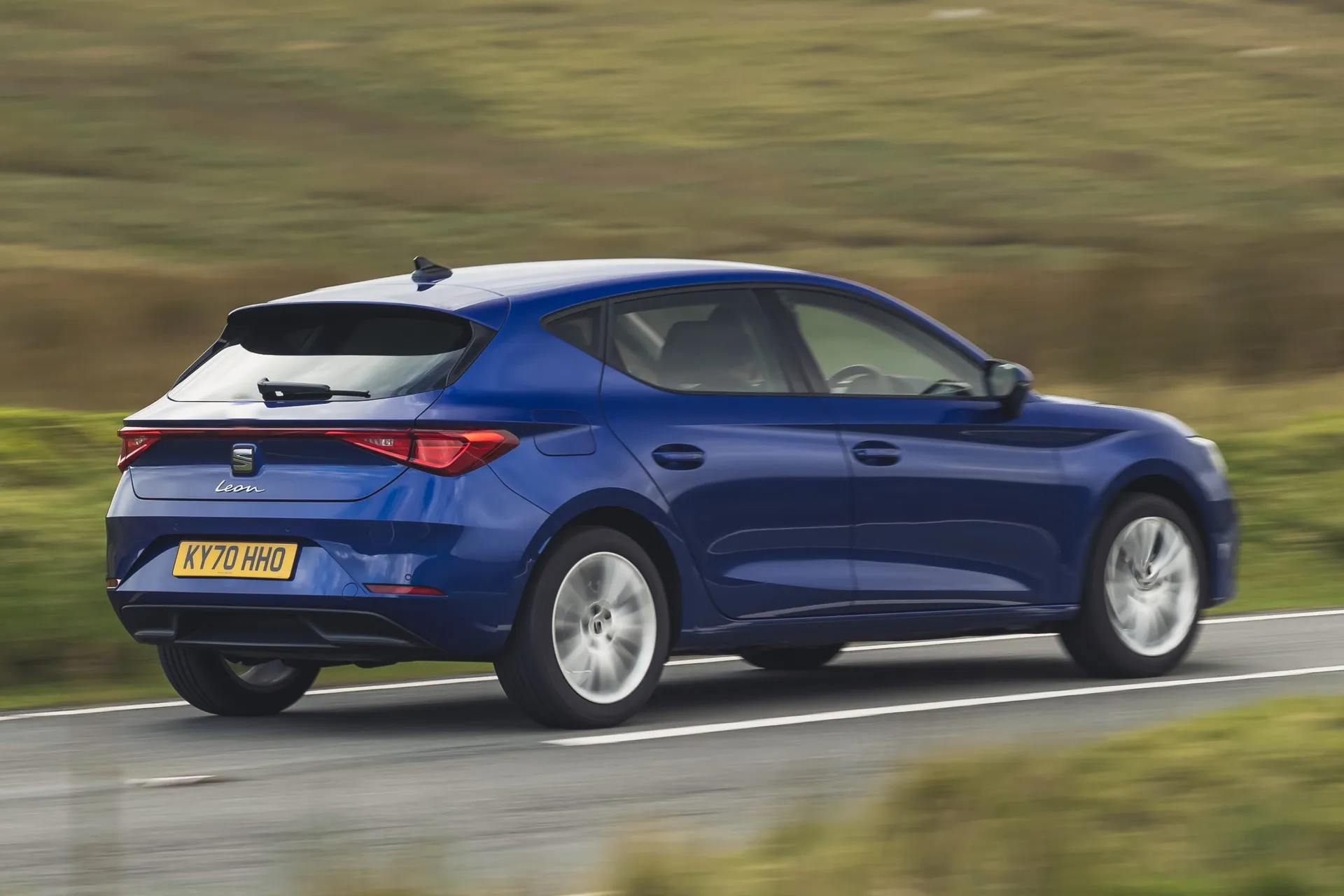
Unlike a lot of sportier cars, you're not going to notice too much of a trade-off in comfort. Most models ride pretty well, although you should avoid the FR or FR Sport trim if your local roads are less than perfect. That's because FR models come with sports suspension as standard, which means lumps and bumps in the road are more likely to be felt in the cabin.
That's especially true in the FR Sport model, which also comes with 18-inch alloy wheels, but the harshest riding is the e-Hybrid model. This has the extra weight of the batteries to cope with, which doesn't bode well for ride comfort.
Whether you cover a lot of motorway miles, spend most of your time on rural roads or see yourself as a city driver, the SEAT Leon does everything pretty well. It's easy to navigate traffic and parking's a piece of cake. Front and rear parking sensors are standard on all but the cheapest SE model, while high-spec models get a reversing camera and LED headlights.
What engines and gearboxes are available in the SEAT Leon?
You'll notice that the majority of SEAT Leons used to be powered by a 1.5-litre TSI petrol engine. This is a popular Volkswagen Group engine and it works well in the Leon, providing plenty of performance for out-of-town driving (even the lower-powered 130PS version).
The 150PS model doesn't feel as quick as its power output suggests but is available with a six-speed manual or seven-speed DSG automatic gearbox – go for the latter and it'll come with mild-hybrid technology to improve fuel economy. It's not a full hybrid so don't expect to travel under electric power alone, but it ought to be fairly efficient. With the current Leon line-up, the 1.5 is only offered in 150PS form.
However, the most common engine in the Leon hatch range now is the little three-cylinder 1.0-litre unit, also offered with a choice of manual or DSG automatic gearbox. Don't be put off by its size, this is actually quite a punchy little unit, more than capable of keeping up with fast flowing traffic. Sure, the 1.5 is a better option for motorway driving, but the 110PS 1.0-litre will accelerate to 62mph in 10.9 seconds (or 10.6 seconds with the seven-speed auto gearbox).
A plug-in hybrid model, badged the e-HYBRID, combines a 1.4-litre petrol engine with an electric motor to produce a surprising 204PS. It's not as quick as you might expect (it's also quite heavy) but, if you can charge a car at home and cover a lot of local journeys, it could be a good option for you.
There was a diesel option with a 2.0 TDI producing 115PS, but SEAT dropped this from the new line-up in 2021. While diesels are out of favour with car buyers these days, it could still make a lot of sense if you cover a lot of motorway journeys. This is offered exclusively with a six-speed manual gearbox.
Refinement and noise levels
You'll find little to complain about in terms of refinement. The SEAT Leon does a good impression of a much bigger, more premium car in terms of noise and vibration levels. Even the little 1.0-litre petrol feels surprisingly grown-up – indeed, it's much more relaxing than similar three-cylinder petrol engines used in alternatives.
The e-Hybrid can run around town in silence (provided it's fully charged) but will make a bit of a din if you try to hurry it along out on the open road. That's par for the course with plug-in hybrids, though.
Opt for one of the FR models and the sports suspension, as well as upsetting ride quality, does also create a little more noise – especially when paired with big wheels and low-profile tyres.
Safety equipment: How safe is the SEAT Leon?
Euro NCAP crash tested the SEAT Leon in 2020 and awarded it a maximum five-star safety rating, which means it's a very safe car for transporting your family in.
There is a wide range of safety systems designed to prevent you from being involved in a crash in the first place. Pleasingly, most of these are standard across the range. Highlights include the Front Assist system, which can apply the brakes if it detects a potential collision with another car, pedestrian or cyclist. The Lane Keeping feature will nudge the steering if you stray out of your lane on the motorway, while all models feature cruise control with a speed limiter (so you can set the maximum speed you wish to travel).
There are a range of Safety and Driving Packs available too, adding things like Automatic High Beam Assist, Predictive Cruise control and Dynamic Road Sign Display. However, these three packs are only available for the FR models, not the SE versions.
MPG and fuel costs: What does a SEAT Leon cost to run?
"The SEAT Leon e-Hybrid officially returns up to 256.8mpg but you'll need to charge the battery regularly to get anywhere near this figure."
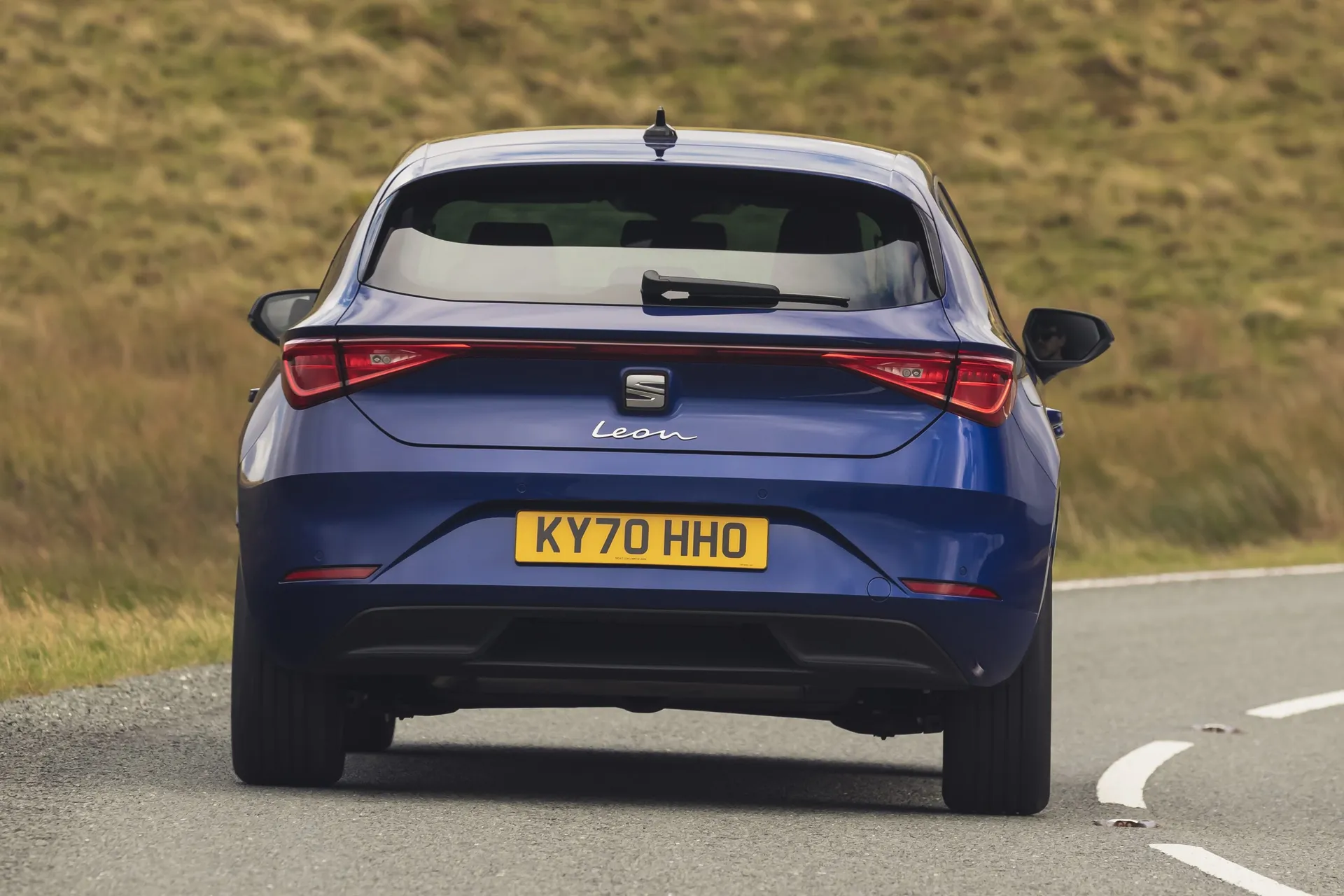
That's because it's a plug-in hybrid that can travel for up to 40 miles under electric power when fully charged. Keep it up topped up and, in theory, you'll be able to glide around town without the petrol engine ever kicking in. Venture further afield, though, and it'll soon become a great deal thirstier once it's out of electricity.
PHEV aside, the regular SEAT Leon models will be fairly cheap to run too. The 1.0 TSI returns up to 51.4mpg with the manual gearbox and the same with the DSG transmission and mild-hybrid tech, while the current 150PS 1.5-litre can manage 48.7mpg, where the 130PS engine was officially good for up to 51.4mpg.
The ultra-efficient diesel officially returned up to 67.3mpg under WLTP fuel economy tests.
How reliable is a SEAT Leon?
The SEAT Leon shares its mechanical bits with a wide range of Volkswagen Group models, so it ought to be pretty reliable. Curiously, SEAT tends to be outperformed by sister brand Skoda in the annual HonestJohn.co.uk Satisfaction Index. We don't expect the new SEAT Leon to be a particularly troublesome car, though.
Insurance groups and costs
If you're a new driver or have a licence that your mother wouldn't be proud of, go for the 1.0-litre model. This falls into insurance group 11. Otherwise, no SEAT Leon will cost a fortune to insure. The e-Hybrid model is the priciest, sitting in insurance group 23E.
VED car tax: What is the annual road tax on a SEAT Leon?
The annual VED car tax bill on most SEAT Leons will be a flat rate of £190 per year once you're over the first year rate, which varies depending on how high the emissions are.
With the 1.0-litre engine, you pay first-year road tax of £220, though this is discounted by £10 for the DSG auto version thanks to its mild hybrid assistance. The 1.5 petrol motor comes in at a heftier £260 per annum, while the plug-in hybrid Leon will see you pay nothing in road tax in the first year.
How much should you be paying for a used SEAT Leon?
"There was a time when the SEAT Leon was a budget alternative to a Volkswagen Golf, but that's no longer the case. A new Leon will cost you pretty much the same as a Golf – and more than budget rivals like the Skoda Scala and Vauxhall Astra."
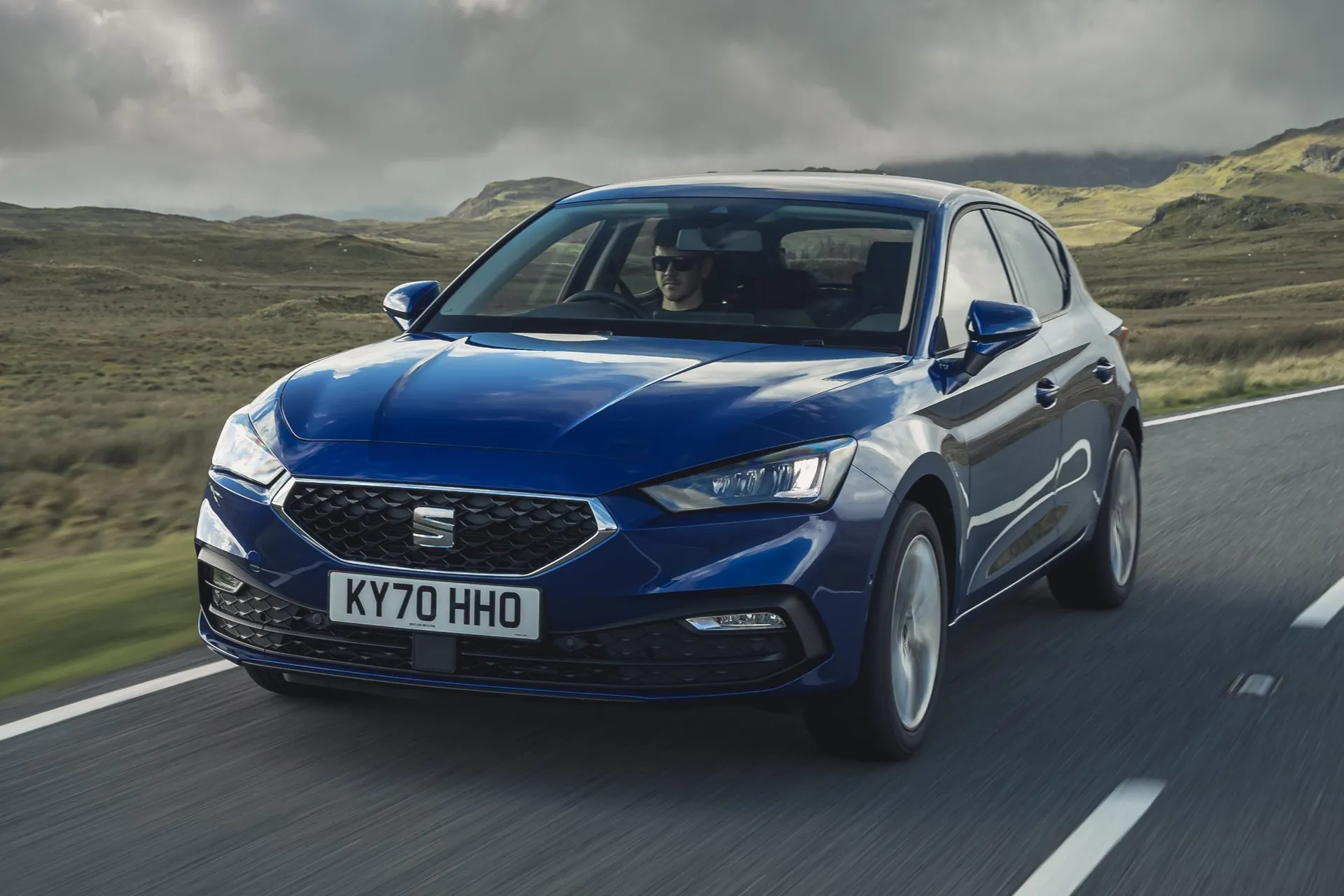
Of course, you can save a huge amount of wedge by looking for a lightly-used example. A budget of just £26,000 will put you in a Leon FR 1.4 e-HYBRID and save you £10,000 on the original list price. And that's for a nearly new car with 1000 miles on the clock.
Choose a three-year old Leon in SE Dynamic trim with the 1.5 TSI engine, and you'll pay around £13,500 for one with 30,000 miles under its wheels.
Trim levels and standard equipment
SEAT doesn't really go big on options, so all trim levels are well-equipped as standard. The SEAT Leon SE is the most basic model, with equipment including 16-inch alloy wheels, LED headlights, rear parking sensors, and metallic paint. Inside, there's an 8.25-inch infotainment system (including Apple CarPlay, Android Auto, DAB radio and Bluetooth connectivity), as well as chrome interior detailing and electric windows in the front and rear. Cruise control is standard, as well as safety features such as SEAT's Front Assist system, Lane Keeping and Isofix points for chilld seats.
We'd recommend looking for a SEAT Leon SE Dynamic as this brings with it quite a lot of desirable kit including 17-inch alloy wheels, a 10-inch navigation system, and Digital Cockpit. Front and rear parking sensors are standard, too, along with three-zone climate control.
The stylish SEAT Leon FR features LED headlights with dynamic turn signals, rain-sensing wipers and bespoke front bumpers. A wireless phone charger is a useful accessory inside, while ambient lighting gives off a premium vibe. You'll also find selectable drive modes and sports suspension, along with 17-inch alloys.
The Leon FR Sport builds on this spec with 18-inch alloy wheels, interior wraparound lighting, heated front seats (as well as a heated steering wheel), microsuede upholstery, and electric driver's seat adjustment.
The SEAT Leon Xcellence will appeal to used buyers looking for a bit of luxury. Standard equipment included 17-inch alloy wheels, a rear-view camera and keyless start/entry. The Xcellence Lux came with 18-inch alloy wheels, leather seats and the Safety and Driving Pack (with features including high-beam assist and predictive cruise control).
Ask the heycar experts: common questions
Is the SEAT Leon a good car?
Is the SEAT Leon the same as the Volkswagen Golf?
Is the SEAT Leon better than the Ibiza?
What is a SEAT Leon FR?
Get our latest advice, news and offers
Keep me updated by email with the latest advice, news and offers from heycar.
By submitting you agree to our privacy policy
